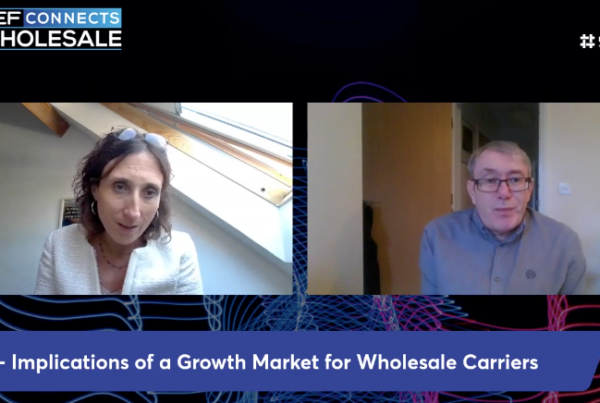MEF’s recent report on IoT shows that consumers instinctively understand its value but are concerned about the consequences. Simon Bates offers five simple tips to ensuring a sustainable market that works for everyone.
What’s not to love about a world of everyday objects connected to each other and the internet? Keyless padlocks, next gen baby monitors, low cost home security systems – even ice cubes that know when you’ve drunk too much and text a friend to drive you home.
The numbers support the global success story: 34 billion connected devices by 2020 with investment of $7.3 trillion by 2017.

But with mainstream recognition comes the inevitable backlash. A new spoof twitter account satirizing the absurdity of some of the devices vying for attention has gathered 88k followers since its launch in July.
Its creator recently blogged on the serious reservations that inspired the account.
Taking consumers along with you for the ride is as easy – or as hard – as you want to make it. Follow these simple rules and you’ll build long term value in your services and your brand.
“If Nest wanted to increase profits it could sell your home’s environment data to advertisers. Too cold? Amazon ads for blankets. Too hot? A banner ad for an air conditioner. Too humid? Dehumidifiers up in your Facebook.”
These concerns around privacy are borne out in MEF’s Report – produced in association with AVG Technologies – analyzing the impact of trust related issues on the Internet of Things. 60% of consumers are concerned about a world of connected devices. Privacy (62%) and security (54%) are seen as the biggest threats worldwide, with home security raising the most concern among connected devices and applications.
Demand is certainly there: just 1 consumer in 10 says IoT won’t deliver tangible benefits. What this research demonstrates is that consumers need to be reassured that the value of their new gadget or service won’t be ruined by a nasty surprise down the line.
It’s important that those with an interest in IoT observe the same best practice principles that apply across the mobile ecosystem. Follow these 5 simple rules to keeping your users onside amid the inevitable backlash.
1) Keep it Lean
The worst services hoover up as much data as they can. Don’t be that service. You need certain types of data to do your job. Take that data and resist the temptation to take more. Just because you could, doesn’t mean you should. 62% named privacy as their main concern around IoT – due in part to the volume of data collected by connected devices.
2) Forget what you learned at kindergarten: sharing is bad
Customers are buying a product or service from you and you alone. You wouldn’t take a friend on a date to peek out from behind the curtains, would you? Don’t share the data you collect from users unless it’s an essential part of delivering the service you promised.
3) Lock the door behind you
More than half of all consumers (54%) said they were especially concerned about the security of IoT devices. The data you’re collecting is sensitive and potentially damaging to the consumer if it falls into the wrong hands. The processes you use to collect, transport and store it must be robust and as failsafe as can realistically be expected.

4) Make yourself available
If consumers have a problem, they’ll want to talk about it. It’s important someone is on hand to offer guidance and reassurance. And it’s not just about after-sales service; the fact that the user can name the company behind the app or service helps build trust long term.
5) Be transparent
Senior Advisor, Policy & Initatives
MEF


This is the number one rule that supersedes the rest. 65% demand transparency in apps and services, and 52% say it’s vital to know that a wearable device is collecting data. What we learn is that if you do decide to share the data you collect (and we all need to make an honest dime), be open about it. Explain what information you’re sharing and with whom. Make sure the companies you’re sharing with have their own policies for dealing with personal information and link to them.
Taking consumers along with you for the ride is as easy – or as hard – as you want to make it. Follow these simple rules and you’ll build long term value in your services and your brand. Ignore them and consumers will switch off and tune out. Still, at least your ice cube will call a cab after you’ve drowned your sorrows…






